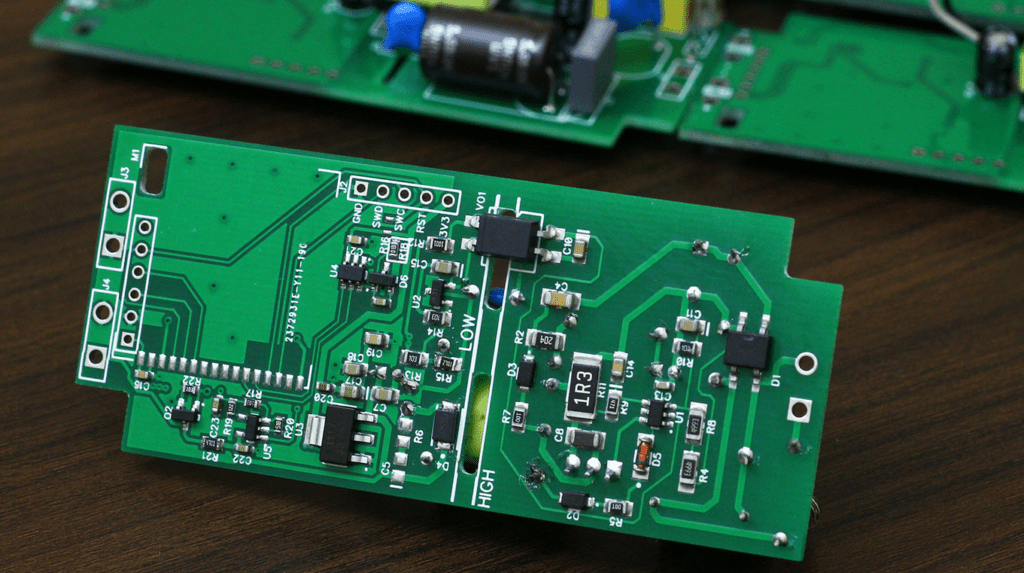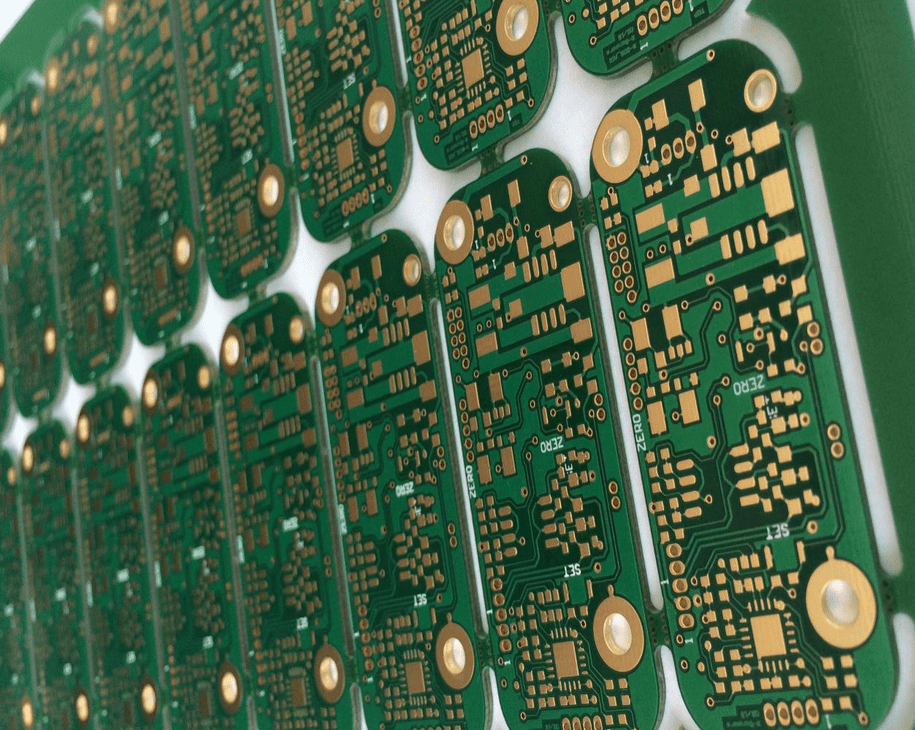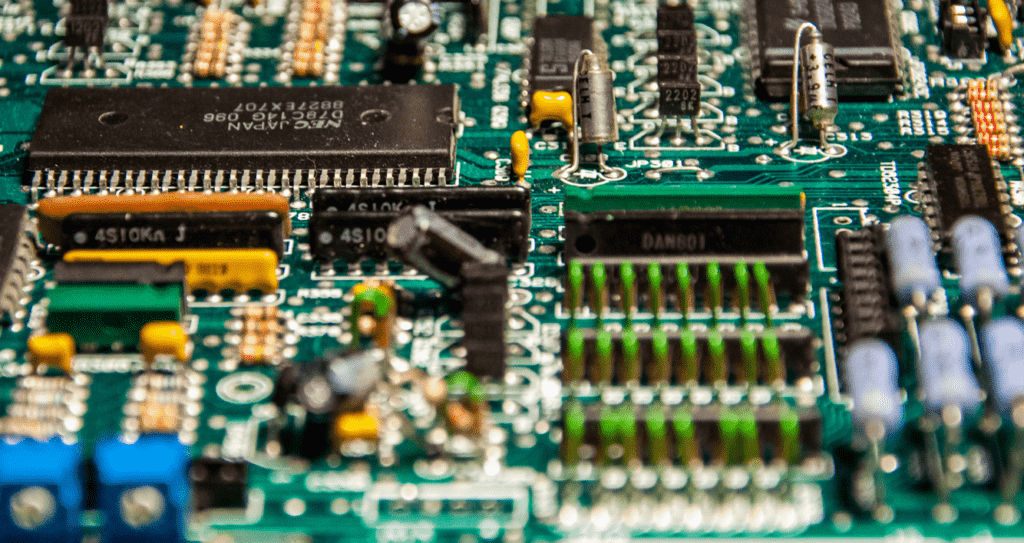Many factors can affect the project’s final cost, whether you’re looking for a custom PCB design for a new product or to have one designed and produced for your existing product. These factors include SMT, lead-free process, panel utilization, and finish.

Surface mount technology
Printed circuit boards based on SMT have many advantages over PCBs based on through-hole assembly (THC). These advantages include reduced cost, greater functionality, and increased automation.
Surface mount technology is the next generation of PCB assembly technology. Its standardized production makes SMT components more reliable and less costly than their through-hole counterparts. As a result, this technology is especially advantageous for mass production.
Surface mount devices are smaller than their through-hole counterparts and have shorter pins. The SMT also helps eliminate electromagnetic and radio frequency interference.
SMT components include diodes, transistors, and integrated circuits. They are soldered to the printed circuit board and firmly mounted on the surface. As a result, they help reduce the device’s weight, which helps reduce costs.
Benefits of SMT
Surface mount technology’s advantages include high efficiency, less heat generation, fewer signal paths, and less physical intervention. As a result, this technology has become the standard for PCB assembly in manufacturing. It has also helped improve electronic product reliability, speed, and functionality.
SMT also provides increased automation, resulting in an efficient PCB assembly process. In addition, this technology also enables the manufacture of electronic circuits in a more compact space.
A mounting machine is required to manufacture PCBs based on SMT. This machine consists of a placement head and dispenser. These machines can be either automatic or manual.
A basic integrated SMT production line should include a printing machine, a chip mounter, and a reflow oven. This machine should also be capable of generating a land pattern that defines soldering points. This will determine the joints’ quality and the board’s repairability.
Other advantages of SMT are lower cost, high assembly density, greater flexibility, and reduced physical intervention. In addition, this technology has helped in making electronics smaller and more reliable. It also provides better high-frequency characteristics.
Although the cost of custom PCB assemblies may vary based on the number of cases and materials, SMT is generally cheaper than through-hole options.
Printed circuit board Finishes
Various finishes used in PCB production can influence the cost of your printed circuit boards. You should consider the type of material to use and how durable the finish will be. The type of material and its thickness will also affect the number of holes you will need to drill. Choosing a tougher material can increase the cost of your custom PCB.
Hot Air Solder Leveling
The most common finish in PCB manufacturing is Hot Air Solder Leveling. This process helps to coat copper layer on a PCB. The resulting surface finish is inexpensive and environmentally friendly. It is also suitable for high-speed circuits.
Immersion Silver
Another finish is Immersion Silver. Immersion silver is a non-electrolytic chemical finish. It provides a good surface finish and is ideal for wire bonding. Immersion Silver is also a RoHS-compliant finish. It is a good choice for circuit boards that have EMI shielding.
Hard Gold PCB plating
Another popular finish is Hard Gold PCB plating. Hard gold is similar to tin and provides an excellent surface for the PCB. However, this finish is not easy to process and requires extra processing. It also requires unique storage.
Electroless Nickel / Immersion Gold (ENIG)
The most expensive finish is ENIG. ENIG is a two-layer metallic coating. The first layer is nickel, with a thin layer of gold over it. It has a thin finish, is conductive, and provides good solderability. It also provides a reliable solder mask. This finish is available on all Sunstone PCBs.
HASL finish
The HASL finish is a common, low-cost surface treatment. We apply it by leveling the surface with hot air knives. It is also aerospace-approved. However, it is rated unfavorably on other counts.
Other surface treatments include Sn-Pb, tin/lead, and immersion tin. The tin surface finish is very popular but has some drawbacks. It may react with copper on the PCB and cause tin whiskers to form. Eventually, the whiskers will start to grow and damage the PCB.
ENIG is a good choice for PCBs that need to meet RoHS standards. It is also a good choice for fine-pitch surface mount parts. It is a two-layer metallic coating with a thick nickel layer over a thin gold layer. The nickel layer provides an excellent barrier to copper. The gold layer adds a little extra protection against oxidation.
Circuit boards Panel utilization

Printed circuit boards can be quite expensive. The cost of a custom PCB depends on the components that go into the design and the manufacturing processes used to make it. The size, thickness, and several layers in the PCB can all affect the cost.
Size of all the components
The smallest PCB size is the cheapest. A small PCB is less expensive than a larger PCB because it uses fewer components. However, a printed circuit board with three or more layers will cost more. This is because it requires more work to manufacture.
Many other factors influence PCB cost. Therefore, the best way to determine your application’s PCB size is to consider your requirements.
Number of holes in the printed circuit boards
The number of holes on a printed circuit board will also influence the cost. For example, manufacturing PCBs with many layers will require more work. Also, different hole diameters will require more machining time.
Lead time
The biggest cost driver is the lead time. A PCB can take up to twenty business days for the expected turnaround time. Therefore, it is best to allow at least that much time. You can also lower assembly costs of your PCB by choosing a less expensive labor source. This can save you up to 50% of your PCB assembly costs.
Number of layers
A multi-layer PCB assembly has a higher risk of defects than a single-layer PCB. A multi-layer PCB is also more expensive because it requires several steps to assemble. Also, a multi-layer PCB requires more material because there are so many layers.
Lead-free process
Many factors can affect the board’s total cost during the custom board design process. These factors include the number of layers, the type of material used, and the number of holes.
A printed circuit board can be costly depending on the type of material, thickness, and several layers. These factors also have a direct impact on the manufacturing process. In general, thicker boards with several layers will have a higher production cost.
Surface treatment used
The type of surface treatment used can also influence the cost. There are several different finishes, including bare copper, OSP, rosin cover, and immersion gold. These finishes have their advantages and disadvantages.

Material
Using thin materials can also increase the cost of a printed circuit board. This can be especially true if the board has intricate designs. In addition, a PCB with several layers requires more material, which means more work for the manufacturer.
Spacing
The amount of space between copper features also affects the cost—the smaller the gap, the lower the cost per board. In addition, the number of components on the bare board will also affect the cost. A larger PCB can have higher price points but can have more features.
Outlines
PCB outlines are also essential. Selecting the right outlines can save time and money in the PCB manufacturing process. In addition, you should carefully choose the size of the PCB and the outlines to avoid waste. This can also save money in the long run by reducing the number of holes required and minimize long-term risk.
Summary
The PCB industry is a complicated one. The cost of a PCB can vary from region to region. In addition, the cost of labor can vary by region. In some regions, labor costs are low, which can save you up to 50% of your PCB assembling costs.
The PCB is complex and requires special skills and equipment to manufacture. In addition, special packaging and packaging materials can increase the cost of a PCB. Therefore, the best way to determine the cheapest PCB size is to consider your requirements.
Some boards do not consider the cost of producing the board. For example, a digital watch requires fewer components than a PCB for a computer. In addition, a PCB for industrial machinery is generally larger than a PCB for a home electronics device.
To achieve cost efficiency, a design team should consider these factors early in the PCB design process. By taking advantage of the existing design scope, the team can avoid surprises later in the process.


